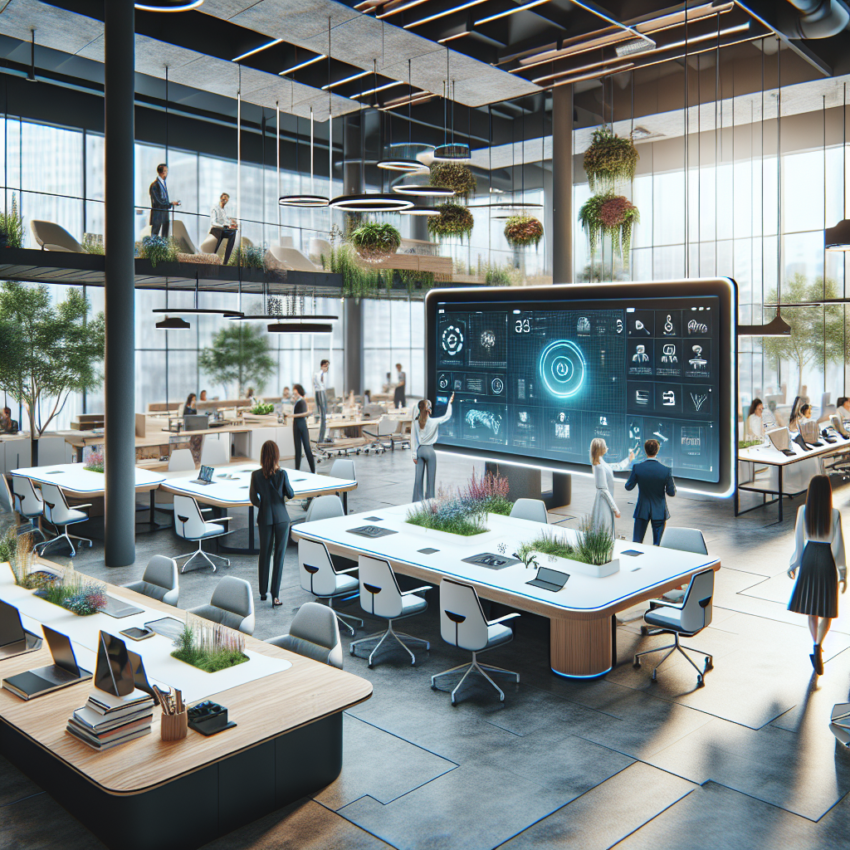The Evolution of Workspaces: From Traditional to Smart Offices
Over the past few decades, the nature of workspaces has undergone significant transformation. From traditional cubicles and fixed desks to open spaces and remote working options, the office environment is constantly evolving. One of the most promising trends taking shape is the concept of a smart office. Smart office solutions are leveraging cutting-edge technology to create more efficient, flexible, and user-friendly work environments.
This article delves into how smart office solutions are shaping the future of workspaces, with a special focus on the benefits they offer to both businesses and employees.
What is a Smart Office?
A smart office is an advanced work environment that uses interconnected technology to optimize daily operations and enhance the overall experience of its occupants. Through the integration of the Internet of Things (IoT), Artificial Intelligence (AI), and various smart devices, these offices can monitor, manage, and automate processes seamlessly.
Smart offices aim to improve productivity, reduce operational costs, maintain sustainability, and offer a high level of comfort and convenience to employees. Examples of smart office solutions include smart lighting, connected HVAC systems, occupancy sensors, collaborative tools, and much more.
Key Benefits of Smart Office Solutions
1. Enhanced Efficiency and Productivity
Smart office solutions streamline workflows and simplify day-to-day tasks. Automation technologies, such as AI-driven scheduling, can manage mundane activities, freeing up time for employees to focus on more critical work. Smart devices can also provide real-time data analytics, helping businesses identify inefficiencies and make informed decisions.
2. Improved Employee Experience
Creating a positive employee experience is crucial for retention and satisfaction. Smart offices are designed to offer personalized and adaptive work environments. For instance, smart lighting systems can adjust brightness and color temperature based on individual preferences and natural light levels. Smart desks and chairs can remember preferred settings for different employees, promoting comfort and reducing potential health issues.
3. Sustainability and Cost Savings
Sustainability is a significant factor driving the adoption of smart office solutions. Smart buildings use energy-efficient systems that not only reduce carbon footprints but also lower utility expenses. Automated lighting and climate control systems ensure that resources are used only when needed, preventing waste and improving long-term cost savings.
4. Enhanced Collaboration and Communication
Smart offices foster better communication and collaboration among employees. Technologies such as video conferencing tools, smart whiteboards, and collaborative applications make it easier for teams to work together, regardless of location. These solutions are particularly beneficial in hybrid work models, where some employees work remotely while others are in the office.
Emerging Technologies in Smart Offices
1. IoT-Enabled Devices
The Internet of Things (IoT) plays a pivotal role in smart offices. Connected devices such as smart thermostats, occupancy sensors, and intelligent lighting systems can communicate with each other to create a harmonious and efficient work atmosphere. IoT solutions enable real-time monitoring and control of office environments, ensuring optimal conditions at all times.
2. Artificial Intelligence and Machine Learning
AI and machine learning algorithms are becoming integral components of smart office ecosystems. These technologies can analyze vast amounts of data to predict and optimize various aspects of the work environment. For example, AI-driven predictive maintenance can foresee equipment failures before they happen, minimizing downtime and avoiding costly repairs.
3. Augmented Reality (AR) and Virtual Reality (VR)
AR and VR technologies are breaking new ground in workplace design and collaboration. Virtual reality can be used for immersive training sessions, allowing employees to learn new skills in a controlled environment. Augmented reality can enhance real-world interaction by overlaying digital information on physical spaces, which can be particularly useful in tasks such as assembly, maintenance, and product design.
Challenges and Considerations
While the benefits of smart office solutions are compelling, organizations must also be aware of potential challenges. Data security and privacy are critical concerns, as smart offices generate and share a significant amount of information. It is essential to have robust cybersecurity measures in place to protect sensitive data.
Another consideration is the initial investment cost. While smart office technology can lead to long-term savings, the upfront expenses for implementation can be substantial. Businesses need to conduct thorough cost-benefit analyses to ensure that the investments will pay off over time.
Conclusion
The future of workspaces is undeniably leaning towards smart office solutions. These innovations promise to transform how we work by enhancing productivity, improving employee experiences, promoting sustainability, and fostering better collaboration. Despite certain challenges, the potential benefits make smart offices an attractive option for forward-thinking businesses aiming to stay ahead in a rapidly changing world.
As technology continues to advance, we can expect even more innovative solutions to emerge, further shaping the landscape of modern workspaces.

